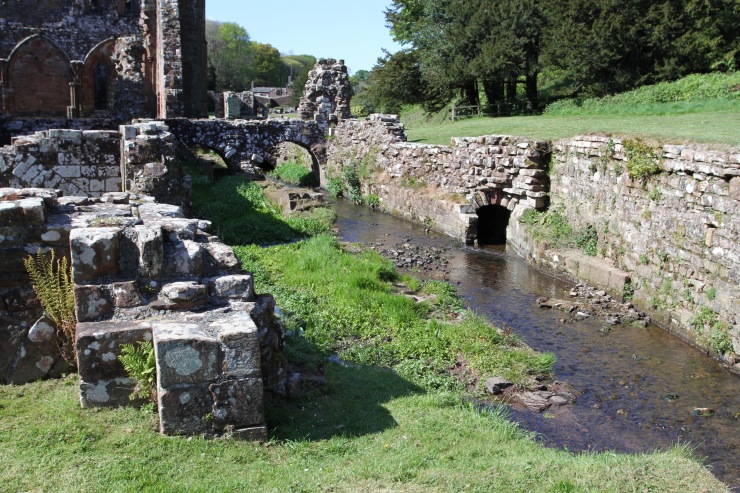Tucked away on the Furness Penninsular in West Cumbria, the crumbling glory of Furness Abbey’s red sandstone is a glorious sight. It sits in beautiful countryside, known as the Vale of Nightshade, and despite its proximity to the towns of Barrow-in-Furness and Ulverston, it was as quiet and peaceful as I imagine it to have been in medieval times. It’s pretty easy to conjure up images of robed monks walking these grounds.


Furness Abbey was founded in 1123 by a group of French nobles, including Stephen, Count of Boulogne, who would go on to become King of England in 1135. By the time Henry VIII ordered the Dissolution of the Monasteries in 1537, Furness Abbey was one of the wealthiest and most powerful Cistercian monasteries in the Kingdom, second only to Fountains Abbey in Yorkshire.
The Abbey owned vast tracts of land across northern England, Ireland and the Isle of Man. They owned mining rights, fishing rights, built castles, ran farms and dominated trade in the region. They even built their own ships, on which they exported wool from their farms and iron from their mines. It was an enormous ecclesiastic money making machine, with a monopoly on industry, agriculture and trade. No wonder Henry VIII wanted to get his hands on it.




Much of what you see today dates from the 12th and 13th centuries, and even in it’s current state it doesn’t take much to see that this was a powerhouse of a place. Its graceful decline and picturesque location have proven to be inspiration for writers and artists. Turner made many sketches of the abbey and Wordsworth wrote a moving stanza in his great masterpiece, The Prelude:
“Of that large Abbey which within the vale
Of Nightshade, to St. Mary’s honour built,
Stands yet, a mouldering Pile, with fractured Arch,
Belfry, and Images, and living Trees,
A holy Scene!”
The really helpful and informative woman who sold me a ticket gave me a quick update on the conservation of the building – a necessary conversation as scaffolding is supporting one of the tallest parts of the building. The story of why was fascinating. Several years ago, English Heritage investigated the leaning walls of the main tower, what they found was both a major problem and a major archaeological discovery.





The monks’ 900 year-old ingenuity was the problem. They had built this enormous structure on marshy land. Their solution was to lay strong oak foundations upon which the abbey stood. Providing that the wood remained completely submerged in water, it wouldn’t rot and weaken. Then they diverted a stream for their own use, which can still be seen today, and by doing so they exposed the wooden foundations to the air.
This weakened the foundations and the ruined Abbey began sinking into the soft ground. Major engineering works were needed to prevent collapse. The upside of this was that during excavations to assess the extent of the damage they discovered the grave of an Abbot. Undisturbed since the Middle Ages, he was found together with his personal possessions, a hoard of medieval treasures including a silver Crozier and monks ring.




They also found the remains of the monk inside, it turns out Abbey life was pretty easy if you were in a position of power. The good life can have serious consequences though, the monk was described as “a well-fed, little exercised man in his 40s who suffered from arthritis and type 2 diabetes“. I doubt this is the same monk who is said to appear as a headless ghost riding a horse through one of the arches in the abbey.

Blimey, this take me back. I was born and raised only four miles from here. Now I’m feeling homesick. Great pictures, though.
Cheers, Alen
It was a bit of a journey down memory lane for me as well, Alen. Had family in Barrow, not to mention regular school trips to the all-weather running track on Walney Island – in my memory it was always blowing a gale.
All the best, Paul